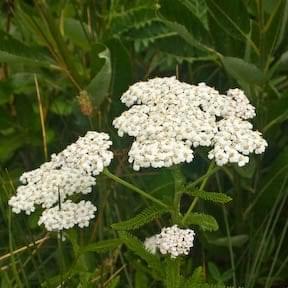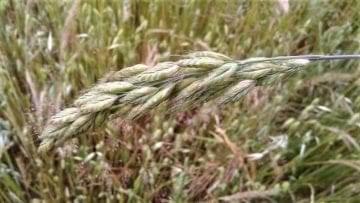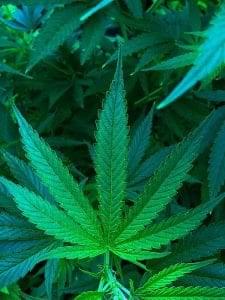Achillea millefolium
Yarrow is nature’s bandage. Since yarrow grows in every vacant lot, abandoned field and rocky wayside, it’s clear Nature must think herbalists need a lot of bandages. This scruffy little herb contains its own antiseptic and a soft calming scent that helps soothe gravity’s sniffling victims.
Medicinal Properties of Yarrow
Yarrow has a vast array of medicinal properties. The volatile oils work as antibacterial, anti-inflammatory and diuretic agents. The tannins are aggressive astringents. The alkaloids are both hypotensive and hypoglycemic. Yarrow even has coumarin in its cells which works as an anti-thrombotic to reduce high blood pressure. The bitter compounds the tongue detects are due to flavonoids such as saponins and unpleasant tasting but powerful alkaloids like achilleine, trigonelline and betonicine. These are the secrets to yarrow’s actions in the digestive system, tissues and the blood stream.
Conditions Best Helped by Yarrow
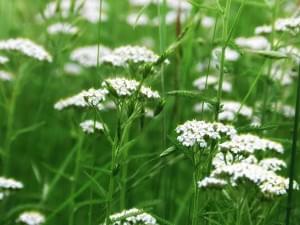
Yarrow isn’t just for scrapes and bruises, it does wonders to reduce fever and clear the sinuses. This plant is the first in line for treating nasty colds and flus. It reduces sweating and treats diarrhea that can accompany illness. The same anti-inflammatory properties in this plant’s volatile oils that reduce swelling in angry wounds also fights bacterial infections. Yarrow has both tannins and salicyclic acid, which accounts for its noticeable astringency. This is one of the compounds that reduces both internal and external bleeding.
Yarrow compresses to the eyes of patients (without yarrow allergies) sharpen blurred vision due to swollen tissue. Do not get yarrow in the eye itself as it will cause further irritation. Just a warm yarrow tea bag or bit of yarrow wrapped in cheesecloth will do.
Since yarrow is so widespread, it makes the perfect medicine for hikers and hunters. Chewing a few of the bitter leaves will help alleviate a toothache until you can get to a dentist. Rubbing the leaves onto your temples will do wonders to subside a headache. Insect bites and nettle burns also relax under yarrow’s charms.
The use of yarrow for treating bruises and pain due to inflammation is legendary. Yarrow has many common names that reveal its history on the battlefield: soldier’s woundwort, bloodwort, and nosebleed plant are just a few. People have used yarrow’s anti-inflammatory actions for hemorrhoids and varicose veins for quick relief. The strengthening effect on the blood vessels make yarrow a wonderful plant to administer as a daily tonic for patient who easily bruise.
Yarrow makes an excellent first-aid poultice for deep cuts and wounds, too. It’s been known to help deep cuts heal with little to no scarring and can help the flesh even and connect after puncture wounds. It may be used in a mouth rinse to prevent dry socket after a tooth extraction. Just add a few drops to a few tablespoons of warm water, gargle and rinse.
Yarrow flower essence, especially pink yarrow flower essence, is quite good at helping empathic people (and others) to release emotional energies they’ve picked up from their environment, family and friends, and from work situations. I’ve found it a useful tool for recovering after attending large functions ranging from parties to conventions, too. Yarrow flower essence is a powerful ally for people in care-providing situations and professions, highly empathic people, and for young children. The list of treatments with yarrow seems to be limited only by the herbalist’s imagination.
For more information on the conditions best helped by yarrow, see the topics in Conditions, including:
List of Yarrow’s Medicinal Actions
Antiseptic, antibacterial, hypotensive, hypoglycemic, astringent, anti-inflammatory, anti-fungal, emmenagogue, tonic and a bitter.
Medicinal Processing
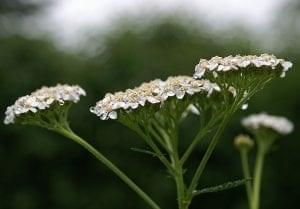
Drying yarrow is as easy as turning it upside down away from sunlight, moisture and dust for a few days. It revives in steams in seconds. Use equal weight of plant to liquid for making tincture. If the tincture isn’t quite strong enough after a few months, add a handful of dry yarrow for more punch.
Yarrow is also available as an invigorating essential oil. Add a few drops of yarrow essential oil to yarrow glycerite as both a preservative and a fragrance. Yarrow glycerite is not a pleasant taste experience but adds vital components to any sinus formula. For best results, cook this formula with a 70 percent glycerine, 30 percent water to a 1:5 herb weight ratio for a few days before straining it. The color will be a deep yellow when it’s finished.
For more information on basic herbal preparations, see the topics in Herbal How-to.
Gardening and Gathering Yarrow
I have never had to plant yarrow in my garden. It pops up in spots I neglect with glee. It prefers the full sun with dry soil but grows easily under my sycamore trees in the drought garden by the street. I have picked it in sand dunes, on top of mountains and along the edge of a neglected apple orchard. This rangy perennial grows in zones 3-10 and range wildly in height from 6-48 inches.
Gardeners living in deer country can grow this herb without fear of unwelcome grazers. It’s been propagated in a wide variety of heights and colors for its beauty in the garden as well as for how well it dries. From its native white to a soft pink often called Apple Blossom, to the dark golden yellows and reds, all varieties of yarrow are reputed to be excellent medicine. If you plan to use yarrow in dried arrangements, plant one of the varieties that boasts large and sturdy flower heads on long, straight stems.
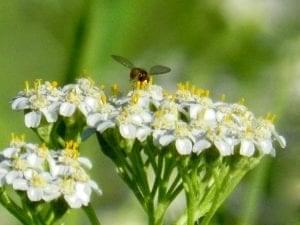
Yarrow can be susceptible to mildew and doesn’t grow as well in humid climates. Watch for gray spots on yarrow’s leaves and flower heads and apply a 1-Tablespoon-to-one-gallon baking soda and water solution to treat the mildew, or better yet, move your yarrow to a less damp environment.
Gathering Yarrow
Look for plants with healthy green stems with alternate, feathery leaves and yellow centered, white to purplish flowers. The scent of yarrow in unmistakable. Healthy plants with dry soil have the heaviest scent, which means they are full of the essential oils the herbalist seeks.
Yarrow is simple to harvest. The flowers are best collected at the peak of summer. Simply break off or snip the aerial parts that look healthiest. Remember to leave some flowers behind for the bees and for next year’s harvest.
Quick ID tips
Appearance: Yarrow has stiff green stems with feathery leaves running alternately up the stalk, which is topped with an umbrillatum floral spray. The flower petals surrounding each yellow center range from white to slightly purple in color depending on soil conditions.
Taste: Bitter with a slight floral taste.
oder: Soft floral scent.
Using Yarrow to Care Animal
My chickens will not eat any aromatic herbs such as yarrow, but I like to hang yarrow branches in their coop to keep their delicate respiratory systems clear. Yarrow tea or a shot of yarrow glycerite may be added to one source of their drinking water to prevent and treat infections. The scent puts animals off, which is a great defense for the plant. I have to be sneaky and moderate with my use with any of my critters.
Topical treatment of any wound for any animal (horses, poultry, cats, dogs and lizards) is excellent. The scent keeps some critters from licking the medicine off. Since yarrow is also good taken internally, I’m happy to see some of it go into their mouths too. I have put yarrow oil on a fussy cat’s paw so that he WOULD lick off the medicine and harvest the advantages of yarrow taken internally.
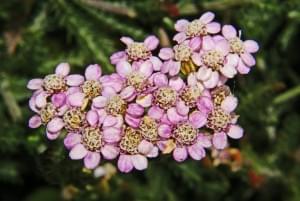
Yarrow flower essences, especially Pink Yarrow flower essence, are potent healers for helping our animal companions to release negative and excessive emotions. Yarrow flower essence works at the empathic level, helping animals of all kinds to release the emotional energies they’ve absorbed. Even pets who aren’t generally highly empathic can be helped by yarrow flower essence when their people are experiencing stress and challenging emotional periods. For animals, flower essences are best administered through the skin. Four times a day, put a drop or two on the inside flap of your pet’s ear, in the space between his or her toes, or in any area where you can easily and comfortably reach exposed skin.
Household formulas and Non-medicinal Uses of Yarrow
Yarrow has a lovely scent that slowly escapes into the room when exposed to heat. Throw a bundle of yarrow on the dashboard of your car. The scent will gently fill the cab on hot days and when the heater is on. Or, include it in dried arrangements and potpourris for your home and office to help keep your environment healthy, especially through the winter months or highly emotional periods. Yarrow is used in aromatherapy to soothe hypertension. This property is handy during rush hour traffic.
Yarrow is good at drying oily skin and hair. Whether you choose to use yarrow as a facial steam, a wash, a bath, or a warm compress applied directly to blackheads or patches of acne, yarrow can help tighten pores and dry oily skin as well as hair.
Yarrow does well as a household cleanser. Its medicinal properties combined with its delightful floral scent restores life to stuffy rooms while purging nasty germs. Yarrow flower is a primary ingredient in my favorite Three Flower Household Cleanser recipe. You could also add a few drops of Yarrow essential oil to your mop bucket to enhance spring cleaning.
For more recipes and ideas for using Yarrow, see the topics in Recipes.
Cautions for Yarrow
As yarrow is a member of the the Astoraceae family, allergies have been reported. The symptoms are (usually) a skin rash or a headache. Discontinue using yarrow if allergic reactions result.
Yarrow is astringent, thus internal use on an empty stomach is not recommended. Do not take yarrow if you have an ulcer as it will compound the symptoms.
Yarrow is also an emmenagogue so it should not be taken internally during pregnancy.
For more information see our History, Folklore, Myth and Magic page on Yarrow.

